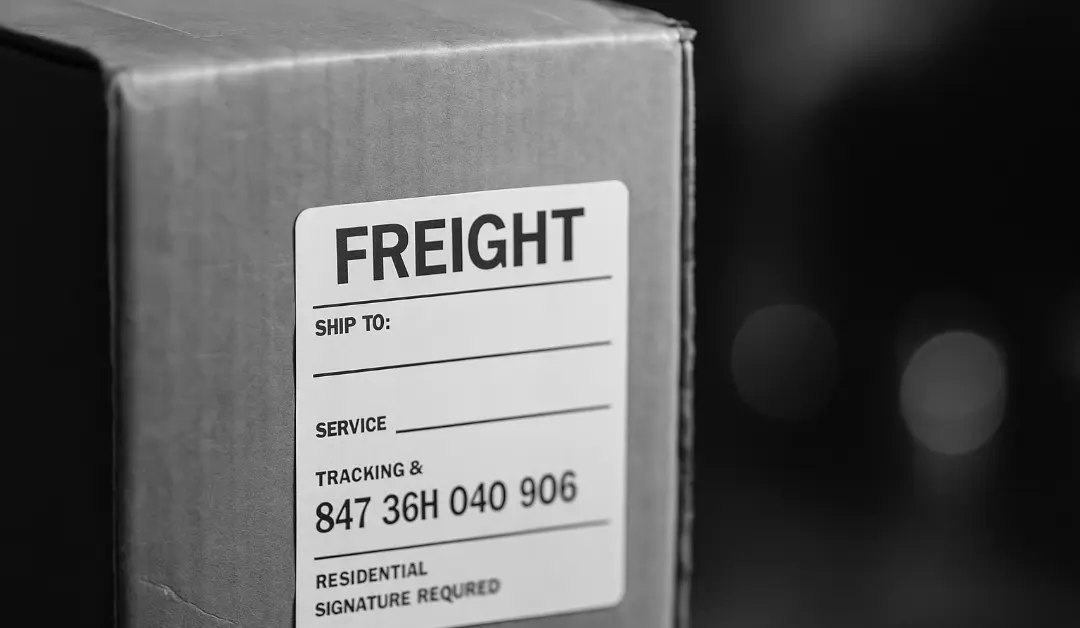If you’re scaling a brand or operating a 3PL, you know that transparency in the supply chain isn’t always ideal. That’s where blind bills of lading come into play.
Sometimes, a little discretion can protect your margins, supplier relationships, and business strategy.
What are Blind Bills of Lading?
Blind bills of lading are modified shipping documents that hide the identity of one or more parties in the transaction—usually the shipper, the consignee, or both.
In most cases, it’s used to protect the supplier’s identity from the buyer or end customer. It allows a reseller, wholesaler, or 3PL to keep their source or fulfillment details private while still facilitating a standard freight move.
Unlike a standard BOL—which clearly lists the shipper, consignee, and carrier—a blind BOL intentionally obscures some of that information. Depending on who initiates the request, you may see:
- A one-blind BOL, where only the shipper or consignee is hidden
- A double-blind BOL, where both parties are hidden from each other
- A three-way blind BOL, where even the carrier has limited visibility into who’s who
It’s commonly used in drop shipping, wholesale distribution, and white-label fulfillment.

Why Would Someone Use a Blind BOL?
There are several business reasons to request a blind BOL:
- Protecting supplier relationships: A reseller might not want the end customer to see where the goods came from (to prevent direct sourcing)
- Avoiding margin exposure: Pricing and branding details are easier to hide when the supplier’s name isn’t listed
- Controlling brand perception: If you’re building a premium brand, you may not want it associated with a lower-cost manufacturer or generic warehouse
- Third-party fulfillment: Some 3PLs use blind BOLs to support clients who want to ship from shared warehouses without revealing the true origin
How Blind BOLs Work (and What to Watch Out For)
To execute a blind shipment, the shipper (or broker) provides alternate documentation to the carrier—usually before pickup. The carrier is then instructed to use the blind BOL instead of the actual shipping document. It’s crucial that:
- The carrier agrees to the blind shipment in advance
- The alternate documents are correct and submitted on time
- All parties understand who’s supposed to see what
Mistakes in a blind BOL can cause missed pickups, delays, or even legal issues if documentation doesn’t align with carrier requirements.
And not all carriers allow blind shipments, especially without prior notice. Some may charge additional fees or require the use of a specific platform to manage the request.
Real-World Use Cases
Example 1: DTC brand using a 3PL
A premium skincare brand works with a fulfillment partner that ships directly from a shared warehouse. To maintain brand integrity, the brand uses blind bills of lading that list the brand as the shipper—even though the product physically ships from the 3PL’s facility.
Example 2: Marketplace wholesaler
A seller on Amazon sources bulk goods from multiple manufacturers. Rather than expose the factory details to Amazon or the customer, they use blind BOLs to list their LLC as the shipper.
Example 3: White-label manufacturer
A private label supplement company fulfills orders for dozens of resellers. Each one uses blind shipping to hide the manufacturer’s identity and control their brand experience.
How eHub Can Help
Whether you’re operating as a brand, a broker, or a 3PL, eHub’s network and fulfillment intelligence platform helps you execute complex routing logic—including blind shipments—without losing control.
With built-in flexibility across our WMS, label orchestration, and 3PL integrations, you can:
- Configure shipping documentation workflows
- Automate label logic to match visibility preferences
- Access a network of 3PLs and carriers that support blind fulfillment
With our capabilities, you can be sure the right package reaches the right place with precisely the level of transparency (or discretion) you want.
Final Thoughts
Blind bills of lading aren’t about being secretive—they’re all about being strategic.
If you’re running a fulfillment operation that depends on discretion, relationship protection, or white-label scale, understanding how blind BOLs work is a critical part of your shipping playbook.
Need help making blind shipments work at scale?
Let’s talk.



